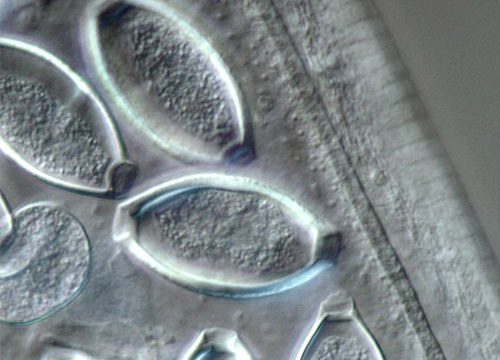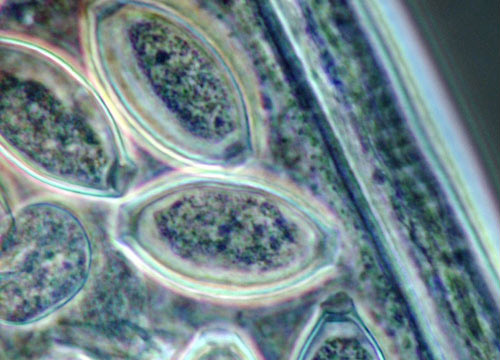Whipworm Eggs (Trichuris trichiura)
Whipworms are intestinal parasites belonging to the genus Trichuris that infect mammalian hosts. The common name of the nematodes is based on the characteristic shape of the adult species.
 DIC
DIC
 Phase
Phase
Phase
Trichuris trichiura is the whipworm species that primarily infects humans. Greater incidence of infection is present in regions with heavy rainfall, a subtropical climate, or highly polluted soil. Infection rates are also highest in children, who may play in soil contaminated with eggs of the parasite and do not always understand the necessity of good hygiene. Some human hosts do not suffer any symptoms related to whipworm infection, but if the parasite burden is high enough diarrhea, dysentery, anemia, pallor, loss of appetite, and other problems may arise. In cases involving large infestations in children, physical and mental retardation can occur.
DIC
Whipworm infections transpire as a result of accidental ingestion of Trichuris trichiuraeggs or embryos. After they are swallowed, the eggs move to the host's small intestine, where they develop into juveniles. The young worms then move to the large intestine and attach their anterior ends to the intestinal wall. After approximately three months, the parasite becomes a sexually mature adult, females producing up to 10,000 eggs per day, which are passed out of the host's system with digestive wastes. The eggs need a warm moist environment to survive outside the body and become infective in about three weeks. Since whipworms do not actually multiply inside a host, each individual worm represents a separate incident of infection.















